- Home
- Raymond Benson
The James Bond Bedside Companion
The James Bond Bedside Companion Read online
THE JAMES BOND BEDSIDE COMPANION
By Raymond Benson
First Digital Edition published by Crossroad Press
Copy-edited by: David Dodd
Cover design by David Dodd
Digital Edition Copyright 2012 by Raymond Benson
Original edition copyright 1984; updated edition copyright 1988
LICENSE NOTES:
This eBook is licensed for your personal enjoyment only. This eBook may not be re-sold or given away to other people. If you would like to share this book with another person, please purchase an additional copy for each person you share it with. If you're reading this book and did not purchase it, or it was not purchased for your use only, then you should return the vendor of your choice and purchase your own copy. Thank you for respecting the hard work of this author.
OTHER PRODUCTS BY RAYMOND BENSON
Fiction
A Hard Day's Death
Artifact of Evil
Dark Side of the Morgue
Evil Hours
Face Blind
Sweetie's Diamonds
The Black Stiletto
The Rock 'N' Roll Detective's Greatest Hits
James Bond 007 Novels
The Union Trilogy (anthology)
The Man With the Red Tattoo
Never Dream of Dying
DoubleShot
High Time to Kill
The Facts of Death
Zero Minus Ten
Die Another Day (based on the screenplay by Neal Purvis & Robert Wade)
The World is Not Enough
(based on the screenplay by Neal Purvis & Robert Wade and Bruce Feirstein)
Tomorrow Never Dies (based on the screenplay by Bruce Feirstein)
Tom Clancy's Splinter Cell (written as "David Michaels")
Tom Clancy's Splinter Cell
Tom Clancy's Splinter Cell—Operation Barracuda
Metal Gear Solid
Metal Gear Solid
Metal Gear Solid 2—Sons of Liberty
Non-Fiction
The Pocket Essentials Guide to Jethro Tull
The James Bond Bedside Companion was written in memory of Ian Lancaster Fleming, for whom the world was not enough.
It is dedicated to my father (who made the mistake of taking me to see Goldfinger when I was nine), and to my English "aunt," who made much of this possible.
Contents
Acknowledgments
FOREWORD TO THE 2012 EDITION
Introduction
Author's Note
PART ONE: THE JAMES BOND PHENOMENON
The Fifties
The Sixties
The Seventies and Into the Eighties
PART TWO: IAN FLEMING - A REMEMBRANCE
PART THREE: JAMES BOND - A PORTRAIT
Background and Early Life
Appearance
Clothing and Other Personal Habits
Taste in Food, Drink, and Drugs
Home and Office Life
Attitudes Toward His Profession
Attitudes Toward Women and Marriage
Outlook
PART FOUR: THE NOVELS
Introduction
CASINO ROYALE
LIVE AND LET DIE
MOONRAKER
DIAMONDS ARE FOREVER
FROM RUSSIA, WITH LOVE
DOCTOR NO
GOLDFINGER
FOR YOUR EYES ONLY
THUNDERBALL
THE SPY WHO LOVED ME
ON HER MAJESTY'S SECRET SERVICE
YOU ONLY LIVE TWICE
THE MAN WITH THE GOLDEN GUN
OCTOPUSSY
The Non-Fleming Novels:
Colonel Sun
The John Gardner Books
PART FIVE: THE FILMS
Introduction
Dr. No
From Russia With Love
Goldfinger
Thunderball
You Only Live Twice
On Her Majesty's Secret Service
Diamonds Are Forever
Live and Let Die
The Man With the Golden Gun
The Spy Who Loved Me
Moonraker
For Your Eyes Only
Octopussy
The "Other" Bonds:
Casino Royale
Never Say Never Again
THE JAMES BOND PHENOMENON - UPDATE
THE NOVELS - 1988 UPDATE
A John Gardner Quartet
THE FILMS - 1988 UPDATE
A View to a Kill
The Living Daylights
Glossary
APPENDIX I: Notable Books Relating to James Bond and Ian Fleming
APPENDIX II: List of Weapons Used by Bond
APPENDIX III: List of Injuries Sustained by Bond
Ian Lancaster Fleming. May 28, 1908—August 12, 1964. (Photo by Douglas Glass.)
ACKNOWLEDGEMENTS
Among the many people who have helped shape this book, I must first thank those on the business side: Patricia Berens, Peter Janson-Smith, Norman Kurz, Ruth Pollack, Maryann Richichi, Eric Roper, Haydee Santiago, Miriam Spaulding, Cynthia Vartan, Victoria Woods, and Lydia Zelaya.
For certain photographic material, I owe gratitude to John Bianchi, Fred Cantey, Paul Dantuono, Morris L. Hallowell III, Pamela Cunningham Hampton, Giorgio Levi, Mama Libbey, Bob McGee, Steven Jay Rubin, Pete Sansone, Richard Schenkman, Rick Sylvester, Michael Van Blancum, the Lilly Library of Indiana University, and especially Mary Slater.
A great deal of appreciation goes to Kingsley Amis, Clare Blanshard, John Brosnan, Ivar Bryce, Josephine Bryce, Naomi Burton, lain Campbell, Lady Mary Clive, Kenneth Corden, Violet Cummings, Ernest Cuneo, John Gardner, Robert Harting, Al Hart, Kevin McClory, Florin Morgan, and John Pearson.
Finally, on a personal basis, I must thank George Almond, Andy East, Janet Kroll, Doug McGrath, Kenneth Siegel, Richard Schenkman and the James Bond 007 Fan Club, everyone at Technimetrics, Inc. (for their tolerance), my supportive parents, and all my friends who have been behind the project, especially James Goodner and Stuart Howard, whose encouragement, enthusiasm, and advice I couldn't have done without.
The author and publisher wish to express their deep gratitude to Glidrose Publications, Ltd. for permission to use quoted material from the James Bond novels.
Additional acknowledgments to 1988 edition: Reg Abiss at Rolls-Royce Motor Cars Inc., Maureen Heffeman, Dr. Kevin Parsons at Armament Systems & Procedures, Inc., and my wife Randi.
FOREWORD TO THE 2012 EDITION
The James Bond Bedside Companion was originally published in America in 1984. A second edition came out in 1986, and then an updated version was issued in both the U.S. and U.K. in 1988. The book went out of print in the early 1990s. Since then, the various editions have sold for big bucks on eBay and other resale outlets. In 2001, a firm produced an e-book and print-on-demand version of the book. The problem with that one was that none of the original plates existed. A facsimile had to be created from a scan of a copy of the book. At the time, scanner software wasn't what it is today, so there were numerous, and sometimes laughable, errors in the text. For example, a word like "burns" was misread by the scanner as "bums!" ("Bond suffered multiple bums…")
Now, not quite thirty years after its original publication, comes a new and improved e-book, audiobook, and print edition of what many 007 fans have called, I'm humbled to say, a "Bond Bible." Since its first appearance, numerous authors have published books on the James Bond phenomenon, mostly dealing with the films. In 1984, however, there wasn't much out there that also dealt with the life of Ian Fleming and his novels. My book filled that gap for a time.
It's obvious that James Bond continues to be very popular. W
hen the 1988 edition of the Bedside Companion was published, Timothy Dalton had just made his debut in The Living Daylights. He went on to make one more, hard-edged Bond film, Licence to Kill, in 1989. This picture has proven to be the most controversial of all the pictures in the series because of its gritty, realistic approach to the character. While it has divided fans, I consider it one of the better entries. After a six-year hiatus because of legal complications with studios and distributors, EON Productions brought Bond back in 1995 with GoldenEye, Pierce Brosnan's first entry in the saga. Brosnan proved to be immensely popular in the role, and his four titles (including Tomorrow Never Dies in 1997, The World is Not Enough in 1999, and Die Another Day in 2002) broke box office records. The series was successfully rebooted in 2006 with Daniel Craig starring as a younger 007 in Casino Royale (to which EON Productions finally got the rights) and its follow-up Quantum of Solace in 2008. At the time of writing, the third Daniel Craig Bond, Skyfall, will be released in 2012. Ironically, the reboot features a grittier, more realistic approach to the character, much like the attempt made in 1989 but to which audiences failed to respond.
On the literary side, John Gardner continued his string of Bond novels with Win, Lose or Die (1989), Brokenclaw (1990), The Man From Barbarossa (1991), Death is Forever (1992), Never Send Flowers (1993), SeaFire (1994), and COLD (1996—called Cold Fall in the U.S.). He also penned two film novelizations—Licence to Kill (1989) and GoldenEye (1995). After COLD was published, Mr. Gardner decided to retire from the gig.
In 1996, I was hired by Ian Fleming (Glidrose) Publications Ltd. to continue the series. I wrote Zero Minus Ten (1997), The Facts of Death (1998), High Time to Kill (1999), Doubleshot (2000), Never Dream of Dying (2001), and The Man with the Red Tattoo (2002), as well as the film novelizations for Tomorrow Never Dies (1997), The World is Not Enough (1999), and Die Another Day (2002). Two of my short stories, Blast From the Past and Midsummer Night's Doom appeared in Playboy, and Live at Five was published in TV Guide Magazine. The Union Trilogy and Choice of Weapons, anthologies of my Bond works, were published in 2008 and 2010, respectively.
Other authors have joined the family since my tenure. Charlie Higson wrote a series of popular young adult novels (the "Young Bond" series) beginning with Silverfin in 2005. Samantha Weinberg, writing as "Kate Westbrook," wrote three novels from the point of view of the Miss Moneypenny character (The Moneypenny Diaries). Official original adult Bond novels resumed with Sebastian Faulks' Devil May Care in 2008 and Jeffery Deaver's Carte Blanche in 2011.
Since I had the good fortune to be a member of this dynasty of authors, I cannot be the one to update The James Bond Bedside Companion. It would be inappropriate and unethical for me to make critical judgements on other writers or the film series. Therefore, the Bedside Companion appearing here is the unchanged 1988 edition.
The book is presented "warts and all." By this I mean that there were some errors in the original version. Quite a few, in fact, mostly dumb spelling mistakes. I've always known about them. When I tried to get them corrected for the 1988 update I was told that the publishers couldn't revise the already-existing text because of the cost to re-do the plates. So I left them. Some of the more glaring ones are: the character's name is "Osato," not "Osata" in the film You Only Live Twice; the sisters are named Jill and Tilly "Masterton," not "Masterson" in the Goldfinger novel (as opposed to the film); Bond impersonates Peter "Franks," not "Francs," in the Diamonds Are Forever novel (but it's spelled correctly in the film section); it's Sheik "Hossain," not "Hussain" in the film The Spy Who Loved Me… things like that. There may also be some odd comments within the film section. When I wrote the book in the early 80s, it was a time when VCRs were not commonplace. For those who owned them they were expensive, elite toys. By the time I obtained my first VCR I had already written the book, and even then not all of the Bond films were available on videotape. I didn't have the luxury of repeat viewings. Hence, all of my reflections on the films were from memory. When I was researching the book in 1981 and 1982, I traveled to the Library of Congress to review the films, and even then I was able to watch them only once. So, if there are some discrepancies with what you remember about the pictures, there's a reason!
Perhaps new revelations regarding Ian Fleming's life or the historical facts behind Bond history and the making of the motion pictures have been presented in the years since this book was published. For example, I claimed that Joseph Wiseman voiced the character of Ernst Stavro Blofeld in the film Thunderball. Now I know this is not true; it was Eric Pohlmann, the same actor in From Russia With Love. That said, I still stand by my opinions and analyses of the books and films with one exception: I was probably too harsh on John Gardner. I was in my twenties when I wrote this book and, like many of my own critics, I was a fussy Bond fan. When I was in the hot seat, I began to appreciate the truly difficult task John had in coming up with a new and original James Bond adventure every year.
Writing the Bedside Companion changed my life. I am continually grateful to the heirs of the late Ian Fleming and to the people at Ian Fleming (Glidrose) Publications Ltd. for putting their trust in me not only to do the Bedside Companion back then, but also to continue the Bond novels for seven years. It was indeed an honor and one that I don't take lightly.
Whether or not the book is still a "Bond Bible" is not for me to judge. I just hope it continues to enlighten readers and bring new fans to the table.
Raymond Benson
December 2011
INTRODUCTION
Ian Fleming was of the twentieth century and indeed, his creation, James Bond, who emerged full-blown from his imagination as a Greek God from the brow of Zeus, may be one of the twentieth century's landmarks. The twentieth century marked the conflux of divergent forces, and a number of these forces converged within Ian Fleming. Typical of twentieth-century artists, Ian Fleming was many people, and indeed, some of the most pointed anecdotes of the century can be applied to him. Thus, in a debate with George Bernard Shaw, Graham Wallas read two contrary opinions by Shaw, adding sarcastically, "I suggest that on different occasions, Mr. Shaw speaks like two different people!" "What?" screamed the red-headed Irishman leaping from his seat "Only two?!"
Ian Fleming was the warmest kind of friend, a man of ready laughter, and a great companion (everything James Bond is not!). Fleming was really quite simple to understand, but only within the complex class structure of the British civilization into the upper stratum of which he was born. He was not English; he was a Scot by his father's line, only third generation in a class structure which reserves its highest accolades for the peerage. Ian was not a peer of the realm nor were any members of his family. He was the second son of a second son. This explains much of Ian Fleming's basic drive. One night at the White House, President Franklin D. Roosevelt, no admirer of the British caste system, questioned Prime Minister Winston Churchill about the rule of primogeniture, whereby the first-born gets everything and the others nothing. "Mr. President," Churchill said, ". . . in Great Britain, the first son gets all and thus keeps the family capital intact. The other children, witnessing and indeed sharing in the benefits, though not the ownership of the good things of life, are determined to acquire them for themselves, to go out and dig for it. In the digging out of their fortunes, they lay the foundations of our empire." (Having made his point, Churchill grandly added, with his captivating twinkle, "Moreover, the first son, being heavily endowed, marries not for money, but for beauty, which, Mr. President, accounts for my good looks!") This, it seemed to me, was the basic drive of Ian Fleming: money. He was brought up on the good things the British privileged class counts as its birthright, and actually, he was never without them as long as he lived.
Fleming was regarded by many as somber. It is a wonder he was able to smile at all. His father was killed during the First World War when Ian was nine. His brother Michael was killed in action in World War II as were many of his Eton friends. Thus, by the time he was thirty-seven, his life had been deeply
affected by the two worst wars in the history of the United Kingdom. Fleming saw that though victor in both wars, the British Empire was dying of its wounds, suffering a hemorrhage of its capital as well as its blood. The effect on him was something akin to the gloom Nelson might have felt at Trafalgar had he been forced to watch his fleet defeated. Fleming felt it deeply. Furthermore, his personal fortunes were closely tied to the fate of his country. He desperately wanted to make money, big money, in the style of the banking house of Fleming founded by his grandfather. But, when the chips were down, he was as certainly Etonian as a West Pointer is a West Pointer: he sought no fate better than that of his country; he was more deeply troubled about England's future than his own.
Kierkegaard made a profound impression on Fleming, and to a certain considerable extent, his own life experience paralleled Kierkegaard's. One aphorism of Kierkegaard's had particular application to both Ian and his wife: "Rather well-hanged, than ill-wed."
There were four things of which Solomon himself said he knew nothing and one of them was "the way of a man with a maid." Ian was an experienced man when he met Anne. She was twice married before, when, née Anne Charteris, she was widowed as Lady O'Neill when Lord O'Neill was killed in action in Italy. She then married Lord Rothermere, one of Great Britain's press lords, and divorced him to marry Ian. In all human affairs, luck is an intangible factor. From an objective standpoint, luck is without blame. By almost any count, the Flemings' marriage was ill-fated from the first. There is evidence that Anne and Ian did not drift apart; they tore each other apart instead.
Both moved in top-drawer Mayfair: Maugham, Coward, and the satellite world of heartless literati. The Flemings, particularly Anne, were very close to Prime Minister Eden, much as the American jet set was close to President Kennedy. It was a fast, slippery track. It is worth mentioning that both Prime Minister Eden and President Kennedy came a cropper on it, as did Fleming, his son Caspar, and eventually Anne. However, it would be fatuous to suggest there was any causal relationship. All one can do is note that whatever his literary existence, James Bond appears as an evil talisman in the very real lives of people in his periphery. Eden's illness and his fleeing to Fleming's place, Goldeneye, has an overtone of Appointment in Samara. Jack Kennedy, professing his preference for James Bond, certainly imitated him to a degree no President had even remotely approached before. President Kennedy's death duel with Cuba's Castro has James Bond overtones.

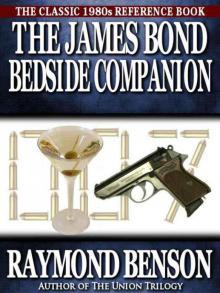 The James Bond Bedside Companion
The James Bond Bedside Companion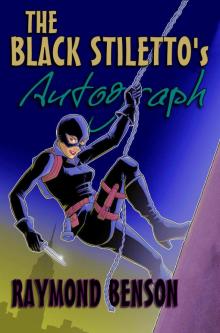 The Black Stiletto's Autograph
The Black Stiletto's Autograph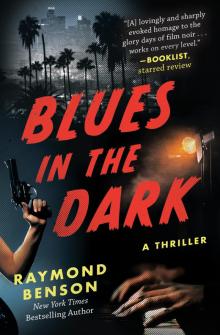 Blues in the Dark
Blues in the Dark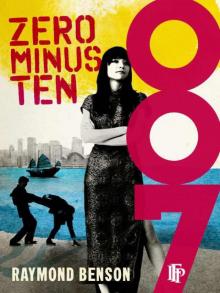 Zero Minus Ten
Zero Minus Ten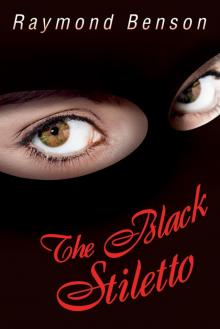 The Black Stiletto
The Black Stiletto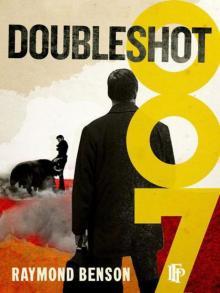 Doubleshot
Doubleshot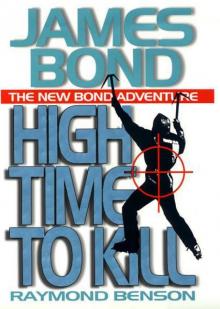 High Time To Kill rbb-3
High Time To Kill rbb-3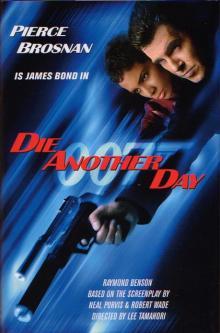 Bond Movies 07 - Die Another Day
Bond Movies 07 - Die Another Day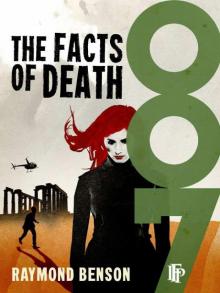 The Facts Of Death
The Facts Of Death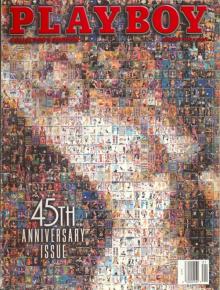 Midsummer Night's Doom
Midsummer Night's Doom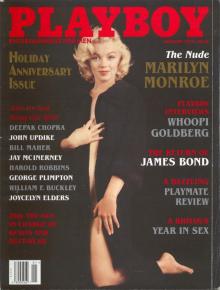 Blast from the Past
Blast from the Past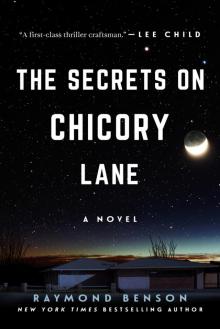 The Secrets on Chicory Lane
The Secrets on Chicory Lane High Time To Kill
High Time To Kill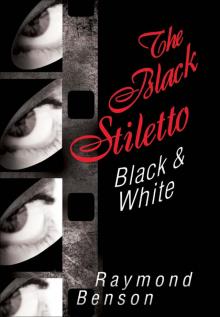 The Black Stiletto: Black & White
The Black Stiletto: Black & White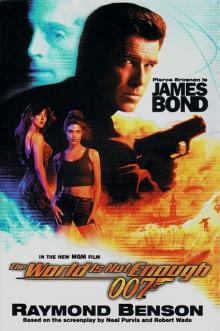 The World Is Not Enough jb-1
The World Is Not Enough jb-1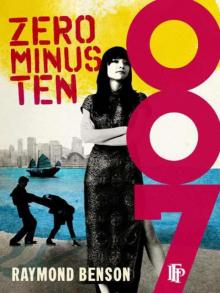 Zero Minus Ten rbb-1
Zero Minus Ten rbb-1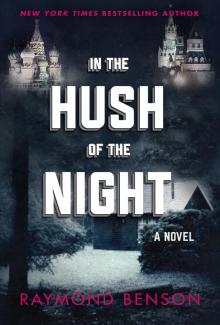 In the Hush of the Night
In the Hush of the Night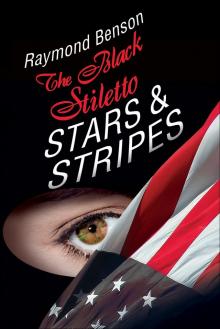 The Black Stiletto: Stars & Stripes
The Black Stiletto: Stars & Stripes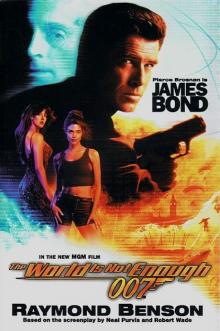 Bond Movies 06 - The World Is Not Enough
Bond Movies 06 - The World Is Not Enough The Rock 'n Roll Detective's Greatest Hits - A Spike Berenger Anthology
The Rock 'n Roll Detective's Greatest Hits - A Spike Berenger Anthology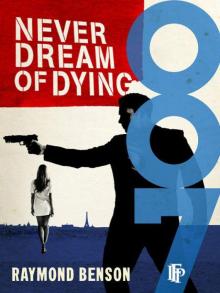 Never Dream Of Dying
Never Dream Of Dying